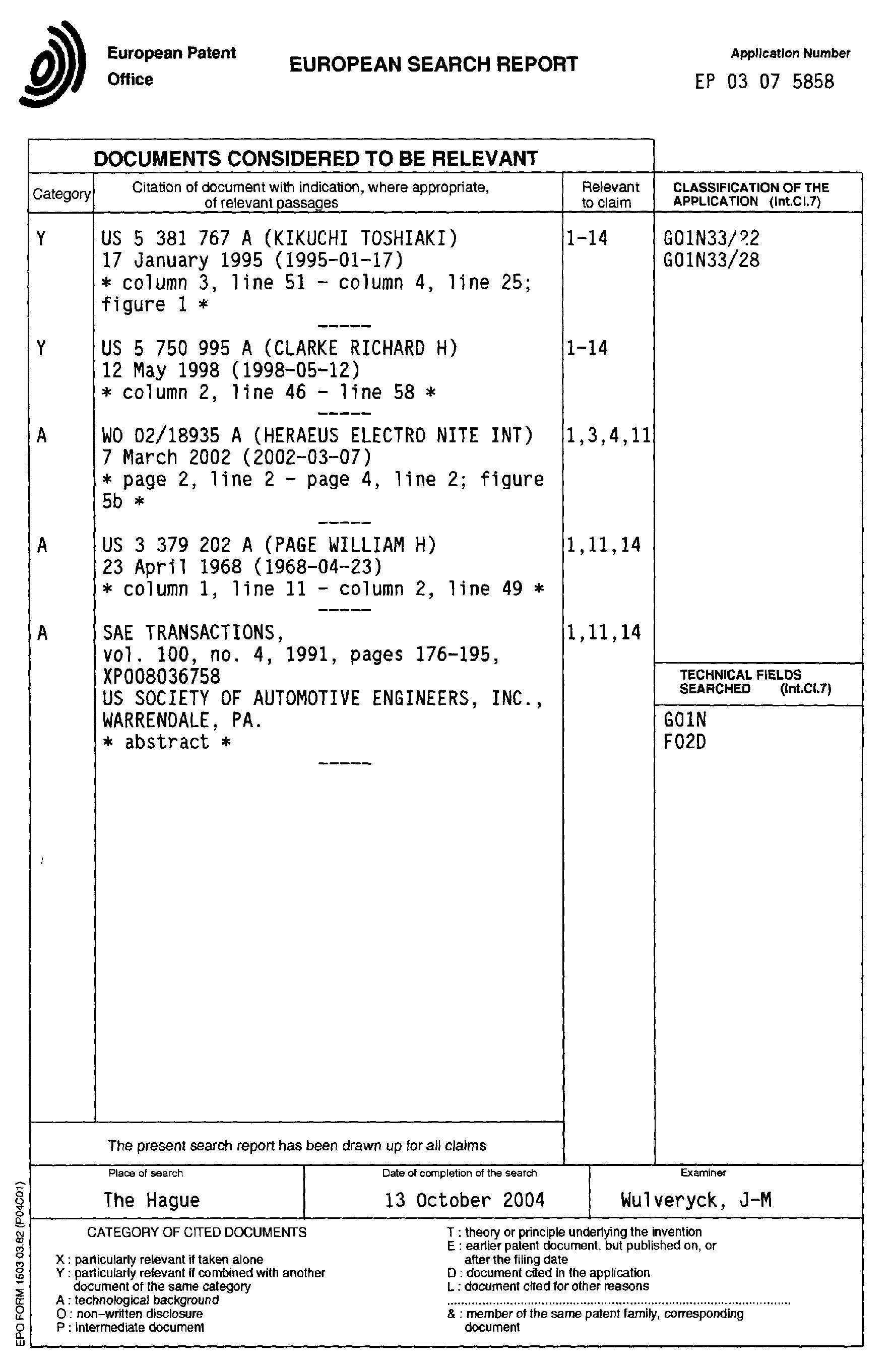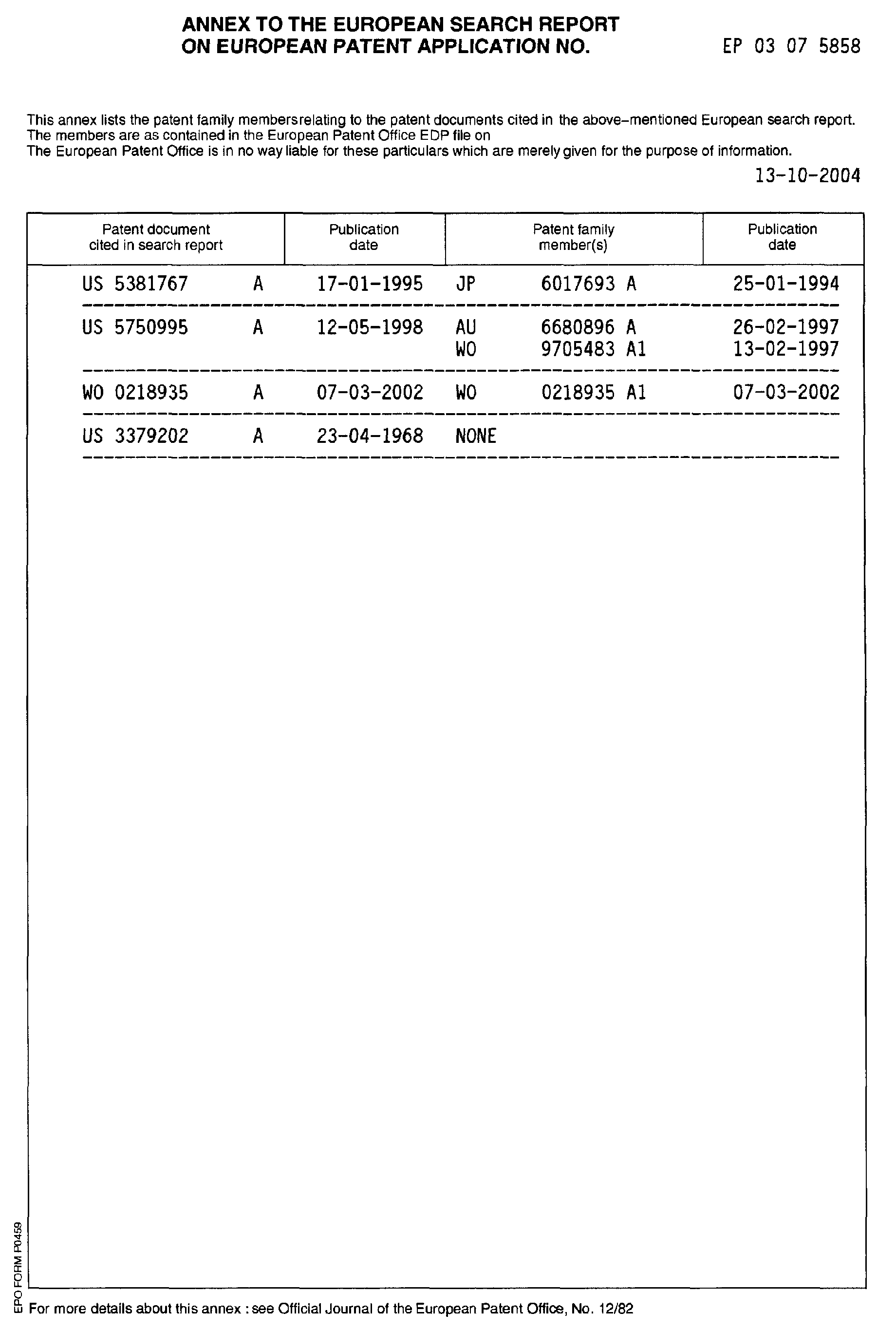| (19) |
 |
|
(11) |
EP 1 353 177 A3 |
| (12) |
EUROPEAN PATENT APPLICATION |
| (88) |
Date of publication A3: |
|
08.12.2004 Bulletin 2004/50 |
| (43) |
Date of publication A2: |
|
15.10.2003 Bulletin 2003/42 |
| (22) |
Date of filing: 24.03.2003 |
|
|
| (84) |
Designated Contracting States: |
|
AT BE BG CH CY CZ DE DK EE ES FI FR GB GR HU IE IT LI LU MC NL PT RO SE SI SK TR |
|
Designated Extension States: |
|
AL LT LV MK |
| (30) |
Priority: |
08.04.2002 US 117833
|
| (71) |
Applicant: Delphi Technologies, Inc. |
|
Troy, MI 48007 (US) |
|
| (72) |
Inventors: |
|
- Lin, Yingjie
El Paso, TX 79912 (US)
- Lee, Han-Sheng
Bloomfield Hills, MI 48304 (US)
- Wang, Su-Chee S.
Troy, MI 48098 (US)
|
| (74) |
Representative: Denton, Michael John |
|
Delphi European Headquarters, 64 avenue de la Plaine de France, Paris Nord II, BP
60059, Tremblay-en-France
95972 Roissy Charles de Gaulle Cédex
95972 Roissy Charles de Gaulle Cédex (FR) |
|
| |
|
| (54) |
A method to calculate fuel DI number from a measured curve |
(57) A method to calculate a fuel driveability index (DI) value is provided from a sample
of fuel in a container as tested by the industry standard ASTM D86 test (28) providing
particular temperature data at various percentages of evaporation as the container
is heated. The particular temperature data provides a DI value. The same sample of
fuel is tested on a sensor capable of retaining a predetermined volume of fuel (30).
Temperature data is monitored at the same percentages of evaporation as the sensor
is being heated (32, 34). Correlation equations are mathematically calculated between
the temperature data from the sensor relative to the particular temperature data from
the ASTM D86 test (36) and stored in the engine controller (26) of a vehicle (38).
The fuel from the fuel tank (14) is tested by heating (42) a similar on-board sensor
(10) having the predetermined volume of fuel (40) and measuring the temperature data
(44) as a function of the remaining fuel in the sensor. The stored correlation equations
are applied to the measured temperatures to provide the required temperature data
to calculate the DI value for the fuel in the fuel tank (46).


